Snakes have been a source of fascination and awe since time immemorial. Snakes have influenced every region, religion, and culture known to man. No wonder there are countless folklore and anecdotes about them. Here are a few infamous myths surrounding a few Indian snakes.
Myth: Getting ‘stung’ by a Rat Snake’s tail will cause one’s limbs to swell up like a tree trunk or shrink drastically.

Snakes do not have any stinging mechanism on their tail. Therefore, accounts of rat snakes stinging with their tail are untrue.
Myth: Red Sand Boa, also known as the ‘two-headed’ snake, is believed to alternate between its heads every six months.

The Red Sand Boa is a non-venomous and slow-moving species. It is naturally endowed with a blunt tail which the snake uses to mimic its head upon sensing a threat.
Myth: Owning a Red Sand Boa will make a person immensely rich as these snakes are capable of unearthing treasures. The animal is of great medicinal value.

The red sand boa is a fossorial snake i.e. it lives underground. The snake, therefore, burrows into the soil for shelter and prey. Contrary to superstitious beliefs, the snake is incapable of finding treasure. Also, there is no scientific evidence of the snake’s medicinal properties and such beliefs are more prevalent among quack practitioners.
Myth: Being ‘licked’ by a Common Sand Boa will cause irregular patches or ‘tattoos’ on a person’s body.
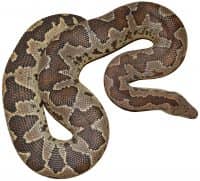
Snakes constantly flicker their tongue to sense the chemicals in the air and gauge their surroundings. Their ‘lick’ does not transmit any allergies or skin disorders. Needless to say, the common sand boa is far from being a tattoo artist!
Myth: The only cure for a bite from a Checkered Keelback is to drink water from the water body habited by it.
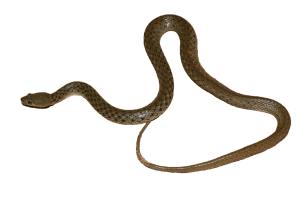
Checkered Keelbacks are known to live in aquatic habitats ranging from rivers, ponds, lakes, drains, and even sewages. Although the snake bite by itself isn’t harmful, ingesting water from such stagnated bodies may result in complications.
Myth: Green Vine Snake, a tree-dwelling snake has a tendency to bite on the eyes and yank the eyeballs off unsuspecting humans who venture too close to it.
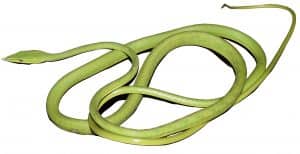
The Green Vine snake employs camouflage with its slender green body and narrow head to source its prey. The snake strikes out at the incoming threats from its perch on trees, resulting in several reports of people getting bitten on the face. However, there have been no proven accounts of the snake’s gouging out a person’s eyes as alleged by common hear-say.
Myth: Bronzeback Tree Snake is deemed dramatically evil according to folklore. It is believed that the snake awaits its target, flings on people to bite on their head, and follows its bite victim till the graveyard to ascertain their death.

The Bronzeback tree snakes are agile species that lunge at their threat as a defense mechanism. In the time taken for the startled predator to recover, the snake would’ve long escaped. This behaviour is falsely perceived as the snake’s striking at people from treetops when in actuality, the species is non-venomous and very shy of human encounter.
Myth: Banded Racers are accused of latching onto a cow’s udder and suckling the milk.
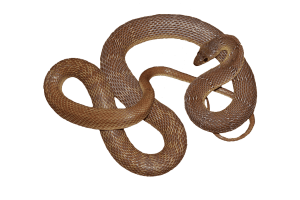
Banded racers frequent farms and barns in the hopes of finding rodents and toads among haystacks. They may mistake a cow’s teat for a pinky or juvenile rodent and try biting it, thereby giving rise to such misconceptions.
Myth: The most sensationalized of the snake species, the Spectacled Cobra is believed to possess a nagamani on its head and have shape-shifting powers.
While human transfigurations and a diamond crown make fanciful depictions on the reel, such instances have no scope in real life.

Myth: Folklore has painted the Spectacled Cobra as a mystical being with a dietary preference for milk and having a vengeful nature.
The cognitive capabilities of snakes are not developed enough to accommodate complex processes such as memory, emotions, revenge, and so on. Further, as snakes are reptiles, they do not suckle their young. Therefore, they do not recognize milk as a dietary choice and are lactose intolerant.
Myth: Pythons are capable of creating a vacuum large enough to suck prey and surrounding objects into its mouth.
It is impractical for snakes to create a vacuum as their morphology doesn’t support it.
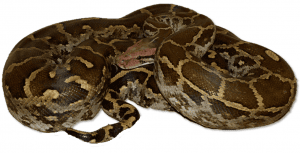
Myth: After ingesting a large-bodied animal, pythons coil around tree trunks to crush the prey’s bones.
Pythons kill their prey by constriction and swallow them whole. They don’t need to coil around tree trunks as their digestive fluids are well equipped to completely break down their prey.
Myth: If you kill a snake, its mate will avenge its death.
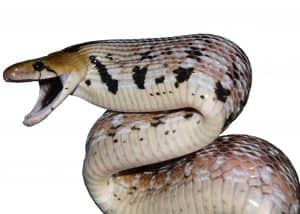
A snake’s cognitive capabilities are limited to food, water, shelter, reproduction, and the occasional fights to defend its territory. Their primeval brains are not developed to process complex emotions like love, enmity, revenge, etc. During the mating season, a female snake may release pheromones or sex hormones along with other bodily fluids upon its death, attracting the males from the vicinity. However, these snakes move away when they find the female dead.

